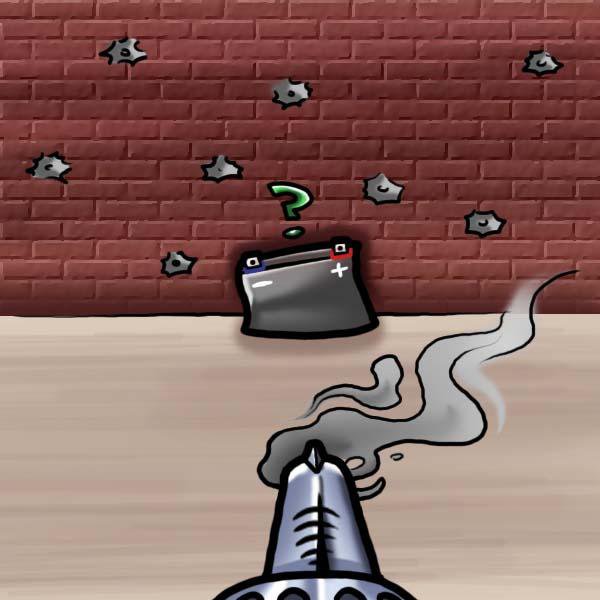Troubleshooting a Battery

General Battery Testing
One of the facts of life is that batteries fail
Some take years, but eventually they will all bite the dust. However, there are so many factors in electrical systems that can go wrong, that often times the battery takes the blame for other component's problems. The easiest and fastest thing to check for problems is the battery. Here is a simple test that can tell you a lot about what is going on inside a battery, and whether it is good or not. This is not meant to test anything other than the battery, but it is a great place to start if you are having electrical problems.
 The first thing to do is to get a pen, a notebook, a voltmeter, and a battery charger. For this test we will assume that the batteries in question are 12v.
The first thing to do is to get a pen, a notebook, a voltmeter, and a battery charger. For this test we will assume that the batteries in question are 12v.
Step # 1
Disconnect the battery from the system, remove cables and connectors, and clean off the terminals. Take a voltage reading for reference and make sure to write it down.
Step # 2
 Try to charge the battery with the 12 volt charger. Hook it up to the battery charger and let it charge for a full cycle.
Try to charge the battery with the 12 volt charger. Hook it up to the battery charger and let it charge for a full cycle.
Note: If you are using a smart or automatic charger and your Step # 1 voltage reading is below about 6.5 volts, then you will need to hook up the battery in parallel with another battery in order to charge it. You can do this with any other 12 volt battery, including a car battery, using jumper cables, but DO NOT start the engine of the car if you are using one. You don't need the charger complete its full cycle hooked up to the battery in testing, just give it enough time to add some voltage, usually 10-20 minutes. Then disconnect the second battery, and let the charger charge the battery in question
Step # 3
After the charger indicates that the battery is fully charged, or if it has charged for more than 8 hours, disconnect the charger from the battery. Let it sit for 30 minutes and then take another voltage reading.
Step # 4
Let the battery sit for 12 hours with no load, DO NOT load test at this time. After the 12 hours take another volt reading. You should be recording the results of each of these readings as you go.
Step # 5
 Hook the battery back up to the bike, or RV, or whatever you took it out of. If you are testing a starting battery, hold the volt meter on the battery while you attempt to start the motor. Record what the voltage drops to. If you are testing a RV battery, turn on as many electrical devices as you can while the voltmeter is on the battery.
Hook the battery back up to the bike, or RV, or whatever you took it out of. If you are testing a starting battery, hold the volt meter on the battery while you attempt to start the motor. Record what the voltage drops to. If you are testing a RV battery, turn on as many electrical devices as you can while the voltmeter is on the battery.
After you have gathered all of this data, email us the results at returns@batterystuff.com
Include in the email:
- Description of symptoms
- All 4 voltage readings labeled at what stage they were recorded
- Your return Contact information
- Order information if it is a battery that you bought from us.
Our technical department will analyze the data within 1-2 business days and respond to you with a conclusion. If the information is conclusive, they will be able to tell you what the problem is, and how best to proceed.
The following is a video demonstration of this prodecure.


